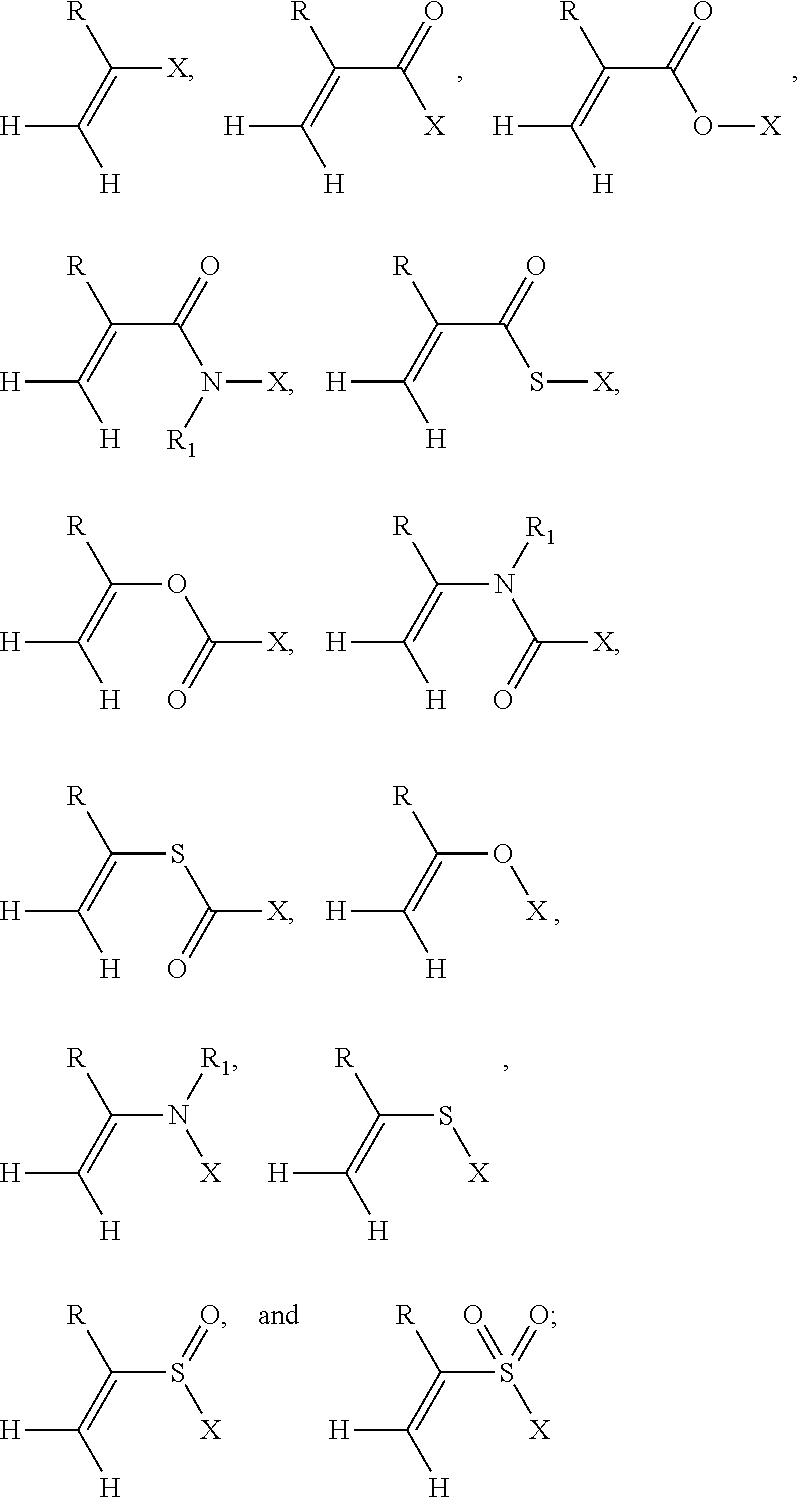Coatings for Electrowetting and Electrofluidic Devices
a technology of electrowetting and electrofluidic devices, applied in the direction of nuclear engineering, plasma technique, railway components, etc., can solve the problems of difficult deposit of coatings at the required thickness, non-uniform pinholes and thicknesses, and achieve the effect of low surface energy polymers
- Summary
- Abstract
- Description
- Claims
- Application Information
AI Technical Summary
Benefits of technology
Problems solved by technology
Method used
Image
Examples
Embodiment Construction
I. Definitions
[0026]“Electrical bias”, as used herein, refers to an electrical potential difference created between the liquid on top of the coating and the substrate beneath the coating. In the current application this electrical potential is used to alter the contact angle of a hydrophilic fluid on the coating surface.
[0027]“Energy Source”, as used herein, refers to the method of energy input into a gaseous system capable of activating precursor gas species so as to render them capable of forming a coating on the deposition substrate. Example energy sources include, but are not limited to, heated filaments, ionic plasma excitation, gamma irradiation, ultraviolet irradiation, infrared irradiation, and electron beam excitation.
[0028]“Filament”, as used herein, refers to resistively heated lengths of material capable of one or more of the following: thermal excitation of precursor gases, evaporative transfer of metal to the deposition substrate, or convective or radiative heating of ...
PUM
| Property | Measurement | Unit |
|---|---|---|
| Fraction | aaaaa | aaaaa |
| Fraction | aaaaa | aaaaa |
| Thickness | aaaaa | aaaaa |
Abstract
Description
Claims
Application Information
 Login to View More
Login to View More - R&D
- Intellectual Property
- Life Sciences
- Materials
- Tech Scout
- Unparalleled Data Quality
- Higher Quality Content
- 60% Fewer Hallucinations
Browse by: Latest US Patents, China's latest patents, Technical Efficacy Thesaurus, Application Domain, Technology Topic, Popular Technical Reports.
© 2025 PatSnap. All rights reserved.Legal|Privacy policy|Modern Slavery Act Transparency Statement|Sitemap|About US| Contact US: help@patsnap.com

